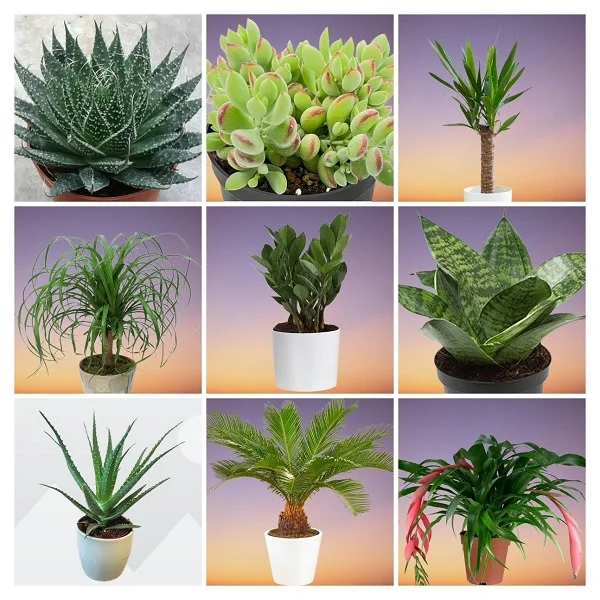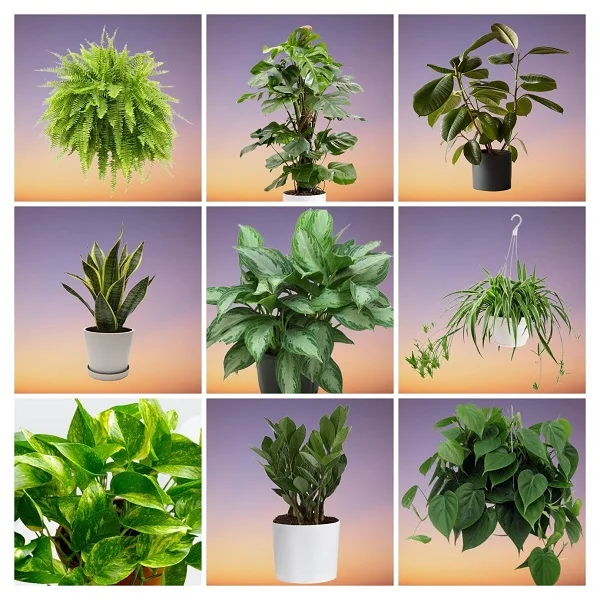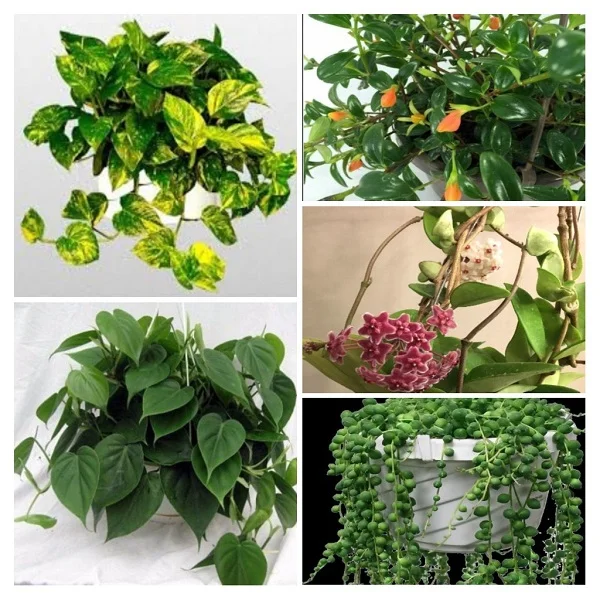Tradescantia spathacea (Boat Lily) Indoor Care, Common Problems and Solutions
Some links in this post may be affiliate links
Boat Lily (Tradescantia spathacea) grows best in bright indirect light, average warmth, moderate humidity and moderately moist, rich, well-drained soil coupled with monthly feeding in the growing season.
Tradescantia spathacea is a magnificent, easy to grow indoor plant. This guide will walk you through everything you need to know about caring for Moses-in-the-Cradle indoors, ensuring it remains healthy and thriving in your home.
Tradescantia spathacea also called Moses-in-the-Cradle, Moses-in-a-Boat, Cradle Lily or Oyster Plant is one of the popular Tradescantia varieties on account of its ease of care and ability to adapt to a wide range of growing conditions.
Moses-in-the-Cradle bears small white flowers in purple 'boats' at the base of the lower leaves and hence the common names, 'Moses-in-the-Cradle', 'Boat Lily' and 'Moses-in-a-Boat'. It flowers at any time of the year if grown under good light.
Moses-in-a-Boat is a low-growing plant with a short stem. The leaves are fleshy, sword-shaped, glossy green with purplish-red undersides placing it amongst the purple-leaved plants for the home or office space.
Oyster Plant is a low maintenance, easy-care, compact plant and is one of the best plants for the limited spaces in the home, office and other places.
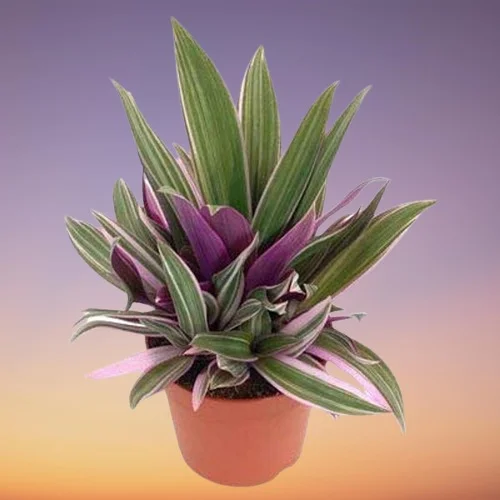
Botanical name: Tradescantia spathacea
Synonym: Rhoeo spathacea
Family: Commelinaceae
Common names: Boat Lily, Moses-in-the-Cradle, Moses-in-a-Boat, Cradle Lily, Oyster Plant
Origin
Tradescantia spathacea is native to Mexico, West Indies and Central America.
Varieties
Boat Lily has many new varieties like the spectacular cultivar Rhoeo discolor 'Variegata' which bears foliage that is striped in burgundy, pink, green and cream.
Is Boat Lily Poisonous?
Yes. Boat Lily is mildly toxic to both humans and pets. If ingested, the plant sap causes burning in the mouth, tongue and throat. The sap may also cause skin irritation in sensitive skin; always wear gloves when handling the plant.
Why Grow Boat Lily Indoors?
- Low maintenance: It requires minimal care and thrives in various conditions.
- Compact & versatile: It fits well in pots, hanging baskets, or terrariums.
- Fast-growing:It quickly fills up space, making it ideal for lush indoor greenery.
Where to Buy
If you are looking to add Boat Lily to your collection, you may get them online from Amazon (Link to Amazon).
Caring for Tradescantia spathacea indoors
To care for Tradescantia spathacea indoors, give it bright indirect light, average warmth of 18-270C, moderate humidity of 50-55% and moderately moist, fertile, well-drained soil coupled with monthly feeding in spring and summer.
Boat Lily care requires repotting only when extremely pot-bound as it grows best when slightly root-bound. Regular pruning is needed to keep it neat, to reduce pest and disease infestations, to encourage a bushy, compact growth and to rejuvenate growth. Keep reading for more on these growing conditions and how to achieve them.

Watering
Water your Moses-in-the-Cradle thoroughly in spring and summer while allowing the top 2-3 inches of soil to dry out between waterings. Maintain the soil moderately moist but not soggy to prevent mushy, yellowing and leaf loss.
Cut down on watering in fall and winter to keep the soil slightly moist as growth is minimal. Do not allow the soil to dry out completely for a prolonged period to prevent wilting, yellowing and drooping leaves.
Make sure that the pot has a drainage hole and the soil is well-draining to prevent waterlogging which can lead to yellowing and root-rot.
Avoid getting water on the leaves, as excess moisture can cause fungal diseases. You may water from the bottom instead.
Light Requirements
Boat Lily thrives in bright indirect light (filtered light). Keep it away from direct sunlight to avoid scorching of the leaves. It can grow in semi-shade (partial shade) but the growth will be slower.
Too little light for Moses-in-the-Cradle will result in dull leaves and leggy growth. To avoid these you may grow the plant under a grow light if the natural light is not adequate.
Regularly rotate the pot to ensure that the plant receives light on all sides for uniform growth and prevent unbalanced growth.
Temperature & Humidity
Boat Lily requires an average warmth of 18-270C with a minimum of 130C to thrive. A room temperature that is comfortable for you is ideal for this plant.
Keep the plant away from sources of drafts like AC units, heat sources and others as they can cause reduced growth, yellowing and leaf drop. The plant is not cold hardy.
Moses-in-the-Cradle flourishes in a humidity of 50-55%. Brown, shrivelled leaf tips and edges are signs of too low humidity. To increase humidity, set the pot on a wet pebble tray or use a humidifier. Ascertain that there is proper circulation to minimize fungal diseases.
Fertilizer
Feed your Boat Lily with a balanced, liquid fertilizer every 4 weeks in spring and summer for lush growth.
Minimize feeding or stop feeding in fall and winter as the growth is minimal. Feeding at this time may lead to fertilizer burn which is indicated by wilting leaves and brown leaf tips.
A white, crusty substance on the soil surface is a sign of excess salts buildup. Regularly, flush out accumulated salts by running a stream of water through the soil until it comes out through the drainage holets. Let it run for a few minutes and repeat the process several times.
Potting Mix
The best potting mix for Moses-in-the-Cradle should be rich and free-draining to prevent it from getting soggy while providing the required nutrients. Most all purpose potting mixes are perfect for the plant.
Repotting
Repot Boat Lily during the growing season only when the plant has become extremely pot-bound; it thrives when slightly rootbound. Use a pot one size larger than the current one and free-draining soil that is rich in organic matter.
Ascertain that the pot has a drainage hole to prevent the soil from getting soggy as it can lead to root-rot and death of the plant. Check out these ceramic pots with drainage holes and saucer on Amazon.
Pruning & Grooming
Pruning Boat Lily involves regular removal of dead foliage to maintain the plant neat as well as reduce pest and disease infestations.
To control the growth and encourage a bushier growth, pinch the growing tips.
Cutback leggy stems at the beginning of the growing season (spring to early summer) to rejuvenate growth.
Occasionally clean the leaves by damp-wiping with a soft cloth to keep them clean as well as discourage pest and disease infestations.
Propagation: How to multiply Boat Lily
Tradescantia spathacea is propagated by plants divison or from stem cuttings in spring to early summer when in active growth. The cuttings can be rooted either in water or in soil.
Learn how to propagate Tradescantia spathacea (Boat Lily) by 3 easy ways.
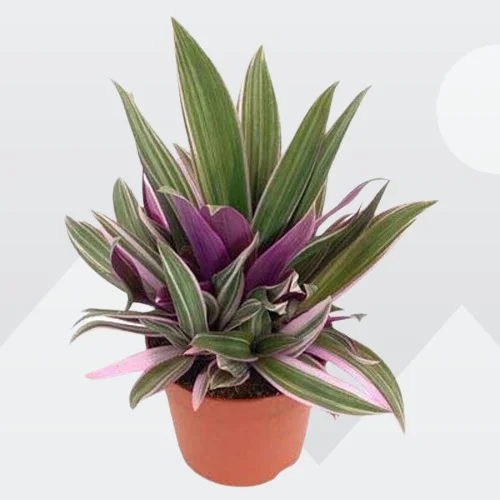
Tradescantia spathacea Problems & Remedies
Tradescantia spathacea problems are brown leaves, plant dying, curling leaves, yellow leaves, brown shrivelled leaf tips, pests and diseases among others. Keep reading for more on these problems and how to fix them.
Brown leaves
Why are the leaves on my Boat Lily turning brown?
The main causes of brown leaves on your Boat Lily are inconsistent watering, soggy soil, and temperature stress.
How to fix it
Inconsistent watering: Do not water on a schedule. Water when the top 2-3 inches dry out. Never allow the soil to dry out completely.
Soggy soil: Use a pot that has a drainage hole and free-draining soil.
Temperature stress: Keep the plant away from drafts emanating from AC units, drafty windows, heat sources, windy doors and others.
Plant dying
Why is my Oyster Plant dying?
Your Oyster Plant is dying due to root-rot disease which is promoted by soggy soil. It is characterized by yellowing and wilting leaves, rapidly followed by browning and plant collapse.
How do you revive Oyster Plant?
- Carefully slip the plant out of its pot and inspect the roots.
- Trim the brown-black, mushy roots and treat the healthy roots with a copper-based fungicidal solution as indicated by the manufacturer.
- Disinfect the pot with the fungicidal solution or use a fresh pot to repot the plant in fresh, free-draining soil.
- Do not water the plant immediately and keep it dry for 5-7 days before you can resume watering.
- Use a pot with a drainage hole and well-draining soil to prevent the soil from getting soggy.
- Reduce watering in fall and winter as growth is slowed at this time; keep the soil slightly moist.
Curling leaves
Why are my Oyster Plant leaves curling?
The leaves on your Oyster Plant are curling due to inconsistent watering, soggy soil, and extreme temperatures.
How to fix it
Inconsistent watering: Do not water on a schedule. Water when the top 2-3 inches dry but do not allow the soil to dry out completely.
Soggy soil: Use a pot that has a drainage hole and well-draining soil.
Extreme Temperatures: Keep the plant away from drafts from heat sources, AC units, drafty windows, windy doors among others.
Yellowing leaves
Some of the causes of yellow leaves on Tradescantia spathacea are overwatering, soggy soil, nutrient deficiency, and temperature stress.
How to fix it
Overwatering: Do not water on a schedule. Water only when the top 2-3 inches of soil dry.
Soggy soil: Use a well-draining potting soil and a pot that has a drainage hole.
Nutrient deficiency: Apply a balanced, water-soluble fertilizer every 4 weeks in spring and summer.
Temperature stress: Keep the plant away from drafts coming from hot surfaces, hot air vents, AC units, windy doors among others.
Brown, shrivelled leaf tips
Brown, shrivelled leaf tips on Boat Lily are caused by too dry air, temperature stress and underwatering.
How to fix it
Dry air: To up the humidity, set the pot on a wet pebble tray, use a humidifier or group the plants together.
Temperature stress: Keep the plant away from drafts to avoid extreme temperatures.
Underwatering: Do not allow the soil to dry out completely; water when the top 2-3 inches of soil feel dry.
Pests
Common pests on Tradescantia spathacea are mealybugs, aphids and scale insects.
How to fix it
- Isolate the affected plant to prevent spread to the other plants.
- Treat the infected plant with neem oil or insecticidal soap as per the manufacturers instructions.
- Regularly check underneath the leaves for these pests and carry out timely control measures.
- Maintain the plant properly pruned and raise humidity to discourage pest infestation.
Diseases
Boat Lily is prone to leaf spot disease which is characterized by brown, moist spots on the leaves.
How to fix it
- Remove and discard the affected parts to reduce the risk of spread to the rest of the plants.
- Spray the affected plant with a systemic fungicide and ensure to cover all the parts with the fungicidal solution.
- Keep the plant on the dry side, do not mist it and ensure good air flow.
- Use a pot with a drainage hole and well-draining soil.
Conclusion
Tradescantia spathacea is a striking indoor plant that is easy to care for and propagate. By providing the right light, water, and occasional pruning, you can enjoy its vibrant foliage year-round. If you are looking for a low-maintenance yet bold houseplant, Boat Lily is an excellent choice.
Frequently Asked Questions
1. How much sunlight does Boat Lily need?
Boat Lily thrives in bright, indirect light but can tolerate low light. However, low light may dull its colors.
2. How often should I water Boat Lily?
Do not water on a schedule. Water when the top 2-3 inches of soil is dry. Avoid overwatering and soggy soil; they can lead to root rot.
3. Why are my Boat Lily’s leaves turning yellow?
Yellow leaves are often caused by overwatering or soggy soil. Let the soil dry out between waterings. Make sure the pot has a drainage hole and the soil is well-draining.
4. Can Boat Lily survive in water?
Yes. Boat Lily can grow in water, but adding nutrients is essential for long-term health.
5. How fast does Boat Lily grow?
Boat Lily grows quickly in warm temperatures, moderate humidity, and bright light and often requires regular pruning.
6. Is Tradescantia spathacea invasive?
Outdoors, Tradescantia spathacea can spread aggressively in warm climates. Indoors, it remains a manageable houseplant with regular trimming.
You liked it? Share on social media.
Related Content
Amazon Associates Disclosure
Homeplantsguide.com is a participant in the Amazon Services LLC Associates Program, an affiliate advertising program designed to provide a means for sites to earn advertising fees by advertising and linking to amazon.com.



